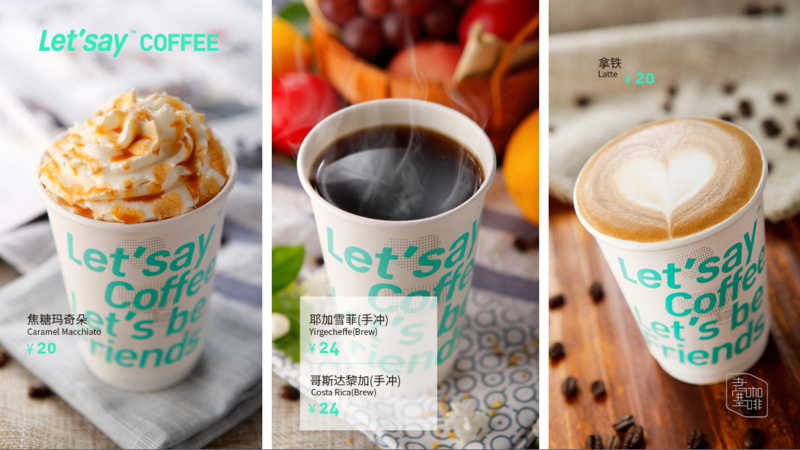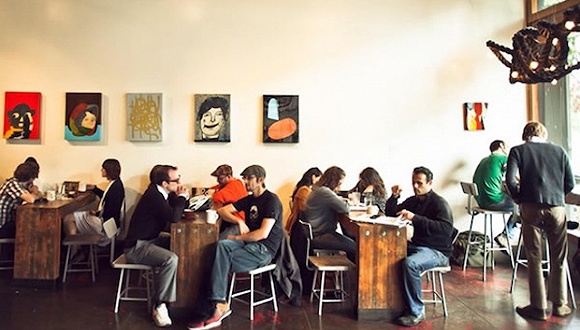The share price is down. Is this cup of coffee cold?
For professional baristas, please follow the coffee workshop (Wechat official account cafe_style)
Many investors have lost interest in Starbucks since last year, even though the company is growing faster than most of its competitors. Whether the coffee shop giant can't escape mediocrity in the long run.
In the second half of last year, Howard Howard Schultz, then chief executive of Starbucks, made his opening remarks on Investor Day of the year striking with his signature boldness and novelty. He compared the coffee shop giant's life cycle to a 20-chapter book, and said: "I still think we're just getting to chapter four or chapter five."
Schultz hopes to use this metaphor to show that the future of the company, which turns 46 in March, is still bright. But anyone who loves reading knows that in the fourth or fifth chapter, the plot usually gets complicated. In the eyes of investors, plot changes in the past few months have changed the nature of Starbucks stories from romance to suspense.
Even Schultz himself says Starbucks shares are a little shaky. From 2009 to 2015, the company's share price rose by 1170%, but fell by 8% in 2016, the first decline since 2008-despite a 10% rise in the market. Frustratingly, there is no clear reason for the decline. Some doubts point to slowing sales growth, uncertainty in the leadership after Schultz (for the second time) announced his retirement as chief executive, or even the Seattle-based company's development plans to rely on overseas markets. Trump's administration has brought uncertainty to multinational operations.
Through these immediate challenges, you will see a more sobering reality: the law of large numbers. For large companies like Starbucks, which have annual revenues of $21 billion and nearly 26000 stores in 75 countries, it is difficult to maintain growth that has cheered investors.
Starbucks' latest quarterly figures, which ended on January 1 this year, highlight the conundrum. Comparable store sales in the United States rose 3% from a year earlier, a measure of the performance of Starbucks stores that have been open for more than a year. The index for the entire catering industry in the quarter was-2.4 per cent, according to TDn2K, a research firm. By comparison, Starbucks is doing very well. Sarah Senatore, a capital analyst at AB Bernstein, says the vast majority of restaurant chains are willing to do anything to achieve data like Starbucks. But by Starbucks standards, this is a disappointing decline. Starbucks, for example, grew by 9% in the previous quarter. After the announcement of the results, investors fled and the share price plunged 7% again.

Some longer-term changes within the company are also holding back. With the catering service basically completed, the growth of this part of the business, which now accounts for 20% of sales, is no longer ahead of the market average. Starbucks has also run into minor problems with its customer feedback program. The company changed the free food reward based on the number of consumption to based on the amount of time spent. But the shift has not been as smooth as expected: although 12.9 million customers have signed up, the increase in participation in the feedback program fell short of Starbucks' expectations for most of last year.
Starbucks sees these problems as small stumbles on the way up. Last year, the company opened 884 new stores in the United States, a total of more than 16000. In China, where Starbucks opens a new store every 15 hours, the country has become the biggest driver of growth. By 2021, it plans to have 37000 stores, surpassing the current number of McDonald's. Mark Kalinowski, an analyst at brokerage Nomura Instinet, thinks Starbucks will also overtake McDonald's as the world's largest restaurant chain by that measure. This is likely to happen within five years.
Of course, volume is a double-edged sword (just ask McDonald's shareholders). Such a mass will make it difficult to grow at an extraordinary rate. " Said Jeffrey Bernstein of Barclays Capital. Nonetheless, Kalinowski forecasts "medium single-digit" sales growth in 2017, while Starbucks forecasts global growth of 4%-still higher than the average for the catering industry.
Whether Starbucks can keep up with the standards will depend in part on Howard Schultz. He stepped down as chief executive in April and was replaced by Kevin Kevin Johnson, the former chief operating officer. William Blair analyst Sharon Zakfia (Sharon Zackfia) pointed out that Schultz will continue to "push for greater changes" to help Starbucks attract more customers. It's not the first time Schultz has done this. In 2000, he left as chief executive to focus on Starbucks' global strategy; at that time, the international business was very small and now accounts for 26% of total revenue.
Starting this year, Schultz plans to build Starbucks-specific baking boutiques-high-end stores that supply high-end products to coffee gourmets. Only one has been opened, but Starbucks plans to open 1000 around the world and is considering adding mini boutiques to 20 per cent of ordinary stores.
Starbucks doesn't expect these stores to change dramatically (or let those who buy $4 coffee obediently start paying $8). John Zolidis, an analyst at Buckingham Research Group, said he never expected revenue from bakeries to have "any real impact" on shareholders. But these boutiques will become the cradle of new products, which will help Starbucks maintain its reputation in the food world and integrate with products in ordinary stores. Focusing on organic beans and finding the perfect espresso can also retain high-end customers, preventing them from switching to smaller competitors like Blue Bottle Coffee as Starbucks tries to become more like McDonald's.
Some investors are particularly encouraged by the fact that Starbucks has been innovating as it develops, rather than waiting for the outlook to dim. Of course, even if people have confidence in the company's potential, buying Starbucks shares now has to pay a high price. Although it is down 13% from its 2015 peak, the share price is still about 26 times 2017 earnings per share, while the average of the s & p 500 is 19 times-both Starbucks shares and reference shares are above the historical average. Investors who have made a profit in the near future may have to wait for the stock to cool down a little before covering their positions.
Important Notice :
前街咖啡 FrontStreet Coffee has moved to new addredd:
FrontStreet Coffee Address: 315,Donghua East Road,GuangZhou
Tel:020 38364473
- Prev

Change the traditional joining model and see how a local coffee brand will transform in a decade?
Professional baristas Please follow the Coffee Factory (Wechat official account cafe_style), a 10-year-old local coffee chain brand that has opened more than 200 stores in franchise mode. How to transform in the face of problems such as brand aging? The 36 krypton consumer group has introduced a lot of new brands before, but this time they want to see the transformation ideas of an old brand. Lao Coffee 2007
- Next

The coffee shop pays more attention to the experience, from baking to brewing, let you do it yourself.
Professional baristas Please follow the Coffee Workshop (Wechat official account cafe_style) from the 19th century instant coffee was popular, to the end of the last century Starbucks put forward the concept of coffee shop is the third space, and now people have ushered in the third wave of the coffee industry. Boutique coffee is becoming more and more popular, and one sign is sprouting: coffee shops are paying more and more attention to experience, and consumers are no longer just walking into
Related
- What documents do you need to go through to open a coffee shop? coffee shop coffee shop certificate processing process
- How to purchase Coffee beans in small Cafe how to choose a suitable supplier for domestic Coffee supply Company
- How to drink Starbucks Fragrance White Coffee? how to make Australian White Coffee? what Italian coffee beans are recommended?
- The Story of Flora Coffee: the name of Flora Coffee Bean and the implication of the Flowers on Florna Coffee
- How much does a cup of coffee cost? How much is the profit of a cup of coffee? What is the profit of the coffee shop in a year?
- Yunnan small Coffee, known as "fragrant Coffee", introduces the characteristics of Alpine Arabica Coffee producing areas in Yunnan, China
- 2023 latest Starbucks full menu price list how much is a cup of Starbucks coffee what is better to drink the most popular hot and cold drinks recommended
- Starbucks different kinds of Coffee Price list Starbucks menu 2023 Top Ten Best drinks in Starbucks
- Starbucks Spring praise Comprehensive matching Coffee Bean theme Story Packaging implication and taste description
- The cost of a cup of coffee latte American coffee cost price and selling price

